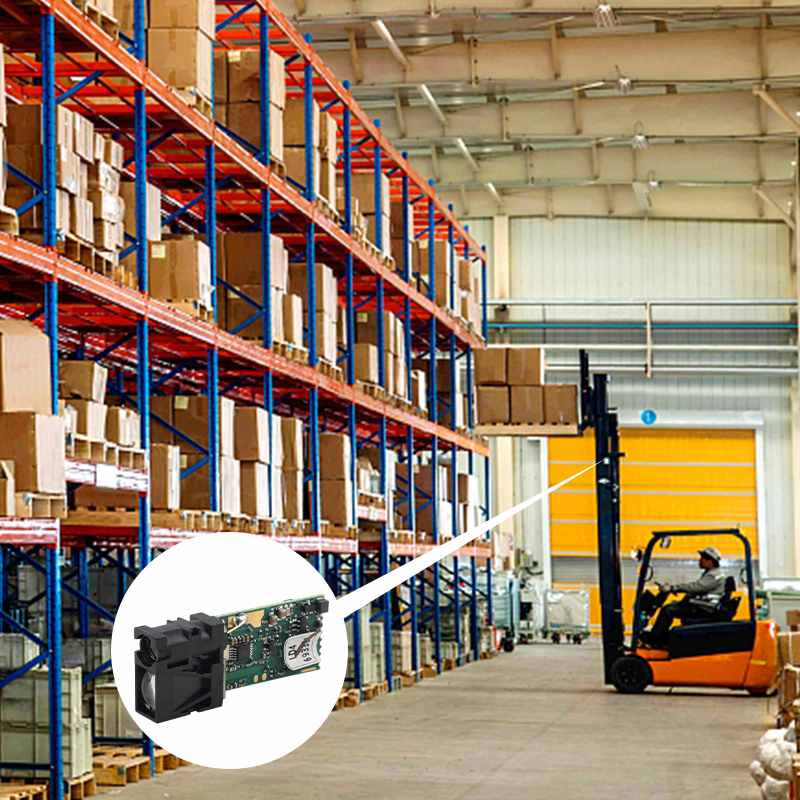Analog vs ToF Distance Sensors: Which Technology Fits Your Project?
When selecting a distance sensor module, one of the most common comparisons you’ll encounter is analog vs. ToF distance sensors. These two types of sensors serve similar purposes — measuring distance — but they differ in underlying technology, accuracy, integration, and use cases.
In this guide, we’ll explore the differences between analog and ToF distance sensors, their advantages and limitations, and which type is best suited for your application.
1. What Are Analog and ToF Distance Sensors?
Understanding analog vs ToF distance sensors begins with how they work.
Analog Distance Sensors
Analog sensors (such as IR or ultrasonic sensors) output a continuous analog voltage signal that corresponds to the detected distance. The farther an object is, the lower or higher the voltage, depending on the sensor design.
- Technology: Infrared reflection or ultrasonic echo
- Output: Voltage (e.g., 0–5V)
- Use Case: Simple, low-cost proximity detection
ToF (Time-of-Flight) Distance Sensors
ToF sensors emit a beam of light (usually laser) and measure the time it takes to reflect back. The result is a precise distance calculation, output as a digital signal via UART, I2C, or other protocols.
- Technology: Laser-based time measurement
- Output: Digital (millimeter or centimeter resolution)
- Use Case: High-accuracy, real-time distance sensing
2. Analog vs ToF Distance Sensors: Comparison Table
Let’s compare analog vs ToF distance sensors across key technical metrics:
| Feature | Analog Distance Sensors | ToF Distance Sensors |
|---|
| Accuracy | Moderate (±5–10%) | High (±1–3%) |
| Range | 10–150 cm (varies) | 5 cm – 4000+ cm |
| Output Type | Analog voltage | Digital (UART/I2C) |
| Environmental Resistance | Affected by light/noise | More stable in varying light |
| Cost | Low | Moderate to High |
| Setup Complexity | Very easy | Requires protocol setup |
| Best Use Case | Basic projects | Industrial/robotics/drones |
As shown above, analog vs ToF distance sensors differ dramatically in performance and integration requirements.
3. Typical Applications
When to Use Analog Sensors
- Entry-level electronics and STEM education
- Basic proximity alerts
- Low-cost projects with minimal accuracy demands
When to Use ToF Sensors
- Robotics with obstacle avoidance
- Industrial measurement systems
- Smart consumer devices (e.g., smartphones, vacuum robots)
Choosing between analog vs ToF distance sensors depends largely on your project’s technical requirements and operating environment.
 Time-of-Flight sensors
Time-of-Flight sensors
 Laser Rangefinder for Hunting
Laser Rangefinder for Hunting
 robot distance sensors
robot distance sensors

 Arduino Laser Distance Sensors
Arduino Laser Distance Sensors
4. Integration Examples: Arduino and Raspberry Pi
Both analog and ToF sensors work well with development platforms like Arduino and Raspberry Pi, though setup differs.
Analog Sensor Example (Arduino)
int analogPin = A0;
void setup() {
Serial.begin(9600);
}
void loop() {
int val = analogRead(analogPin);
float voltage = val * (5.0 / 1023.0);
Serial.println(voltage);
}
ToF Sensor Example (VL53L0X with Raspberry Pi)
- Requires library:
python-vl53l0x
- Communicates over I2C
Community-driven examples are available via Raspberry Pi forums and GitHub.
5. Final Thoughts: Which Should You Choose?
Choosing between analog vs ToF distance sensors is a matter of precision, cost, and application:
| Project Type | Recommended Sensor | Reason |
|---|
| Toy Robot | Analog | Simple & cheap |
| Drone Obstacle Avoidance | ToF | Fast & accurate |
| Factory Automation | ToF (RS485/CAN) | Reliable data transfer |
| Basic Measurement Tool | Analog | Minimal setup required |
Still unsure? Learn more about sensor communication protocols in our guide:
👉 Understanding Distance Sensor Modules: Interfaces, Protocols, and Use Cases